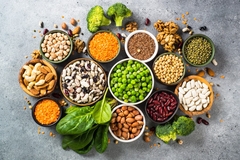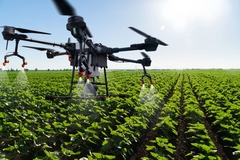
- Industry news
Industry news
- Category news
Category news
- Reports
- Key trends
- Multimedia
- Journal
- Events
- Suppliers
- Home
- Industry news
Industry news
- Category news
Category news
- Reports
- Key trends
- Multimedia
- Events
- Suppliers
VTT extends limits for formable cellulose-based food packs to slash single-use plastic

07 Nov 2023 --- VTT Technical Research Centre based in Helsinki, Finland, has obtained “unprecedented maximum limits” of its extensible formable cellulose-based webs for rigid food packaging applications. The results enable the manufacturing of a range of environmentally sustainable 3D packaging solutions that were previously unattainable, according to the research center.
Food packages require air, liquid and grease barriers. Jarmo Kouko, research team leader at VTT, tells Packaging Insights that the investigation enables deeper 3D shapes, “but the suitable barriers need to be attached before the commercial use. We expect that in the first phase, solid-like, dry-like foods without liquid components would be the most suitable. However, we have not studied in detail the applicability of different foods for these kinds of packages.”

The limited elongation of the board is the main obstacle in achieving 3D shapes, asserts Kouko.
“This [cellulose-based] material enables high volume and low-cost production of 3D shapes (e.g., trays). The key improvements were a combination of the suitable material recipe (developed by VTT) and, technically, the production chain of the material included some details (e.g., foam forming of the cardboard) that need to be found and combined for the high extensibility.”
Kristian Salminen, lead for bio-based products at VTT, adds: “The cellulose-based board-like raw material is a fossil-free material, which is recyclable and biodegradable. A significant amount of the material in this kind of consumer package can be replaced with a renewable (more sustainable) raw material.”
The next step toward commercial application is implementing a barrier coating to the material, highlights Kouko.
 The cellulose-based material enables high volume and low-cost production of 3D shapes for trays.Pack extensibility
The cellulose-based material enables high volume and low-cost production of 3D shapes for trays.Pack extensibility
Enabled by foam forming technology, VTT’s formable cellulose-based webs with 30% extensibility were used to make rigid packages using an industrial product packaging line. This opens up the manufacturing of a wide range of environmental sustainable packaging solutions.
Typical commercial boards have between 3–6% extensibility and best commercial formable boards have 10–18% extensibility. Using foam forming technology, VTT has now obtained up to 30% extensibility. The technology allows brand owners to use rigid, cardboard-like packaging to serve consumers looking for environmentally sustainable products.
The material improvement enables food brands to produce cold cuts to increase cardboard-like package size from 75 grams to 200–250 grams. By adjusting the tray forming process and tray dimensions even larger cardboard-like packages can be produced.
“PP film is one of the world’s most used polymers — its extensibility is up to 300%. Our invention now offers a viable, sustainable alternative on the market,” says Kouko.
“We are excited and proud of the results we’ve produced in our pilot-scale study, which clearly shows the commercial potential of our rigid cellulose-based packaging. In industries that use huge amounts of plastic, like the food packaging sector, we can find plenty of opportunities to reduce the use of fossil fuel-based materials and replace them with sustainable ones that take us closer to carbon-neutral societies of the future and allow us to be more frugal with natural resources,” he continues.
Legislation and compliance The researchers do not expect cellulose-based material to be critically more expensive compared to plastic tray applications.
With the Single-use Plastics Directive and the European Commission’s proposal for Packaging and Packaging Waste Regulation, plastic items like expanded polystyrene food containers and cups have been banned in the European Union since 2021. Producers of single-use plastic products are expected to cover the costs of waste management for these products.
VTT highlights that solutions like its foam-formed cellulose-based packaging give suppliers a sustainable and affordable alternative to single-use plastic.
Salminen says that the researchers have not yet estimated costs for specific applications. “At first, the new material may be more expensive, but the sustainability benefit could be worth the investment for the brand owners.”
“However, paperboard is used as one layer in liquid packages, giving support and stiffness. Therefore, we do not expect that cellulose-based material would be critically more expensive compared to plastic,” continues Salminen.
The development work has been conducted as a part of a research program, where VTT, in cooperation with 54 companies and the Regional Council of Central Finland, has up-scaled promising alternatives for plastic products.
By Natalie Schwertheim











